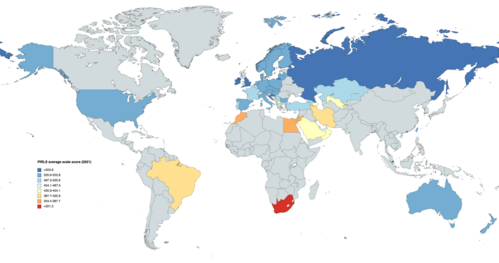Progress in International Reading Literacy Study
It has been conducted every five years since 2001 by the International Association for the Evaluation of Educational Achievement (IEA).
It is designed to measure children's reading literacy achievement, to provide a baseline for future studies of trends in achievement, and to gather information about children's home and school experiences in learning to read.
These background data include information about the following: national curriculum policies in reading; how the education system is organized to facilitate learning; students' home environment for learning; school climate and resources; and how instruction actually occurs in classrooms.
By administering the test every five years, education systems are able to monitor their children's literacy achievement over time.
Its purpose is to extend the effective measurement of reading literacy at the lower end of the achievement scale.
The assessment encompasses an engaging, simulated internet environment with authentic school-like assignments about science and social studies topics.
[10] The ten countries with the highest average reading achievement were: Russian Federation, Singapore, Hong Kong SAR, Ireland, Finland, Poland, Northern Ireland, Norway, Taiwan, and England.
In the 2011 cycle, prePIRLS (now known as PIRLS Literacy) was offered to assess basic reading skills as a bridge to PIRLS, for countries where most children are still developing fundamental reading skills at the end of the primary school cycle.
35 countries took part in the first cycle where students enrolled in the fourth grade were assessed.
The written test is designed to address the process of comprehension and the purposes for reading.
